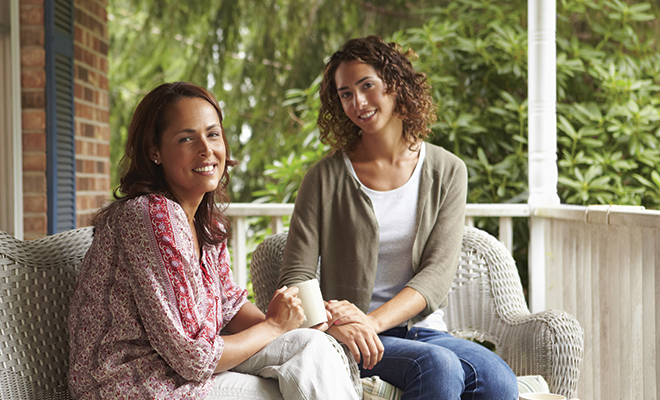
Home is Where the Front Porch Is
Over the years I have had the privilege of visiting and exploring the beautiful state of Tennessee on more than one occasion. The sights, sounds and traditions of Southern culture are fascinating and enchanting to me, but the standout has to be the embracing of what Tennesseans call “porch culture.”
Before the automobile became a staple in virtually every person’s life, walking the neighborhood to greet neighbors and “sit a spell” on the porch was the main form of entertainment for many families. When cars became a common mode of transportation, parking the car in the driveway at end-of-day inspired the owner to pause, say hello and interact with neighbors who were lounging on their porches.
Porches were originally added to homes as a necessity, a way to keep muddy boots or wet umbrellas out of the central living quarters. Later, porches took on a more aesthetic purpose and were designed as a welcoming addition to the house’s main structure. Grandiose porches became a status symbol for wealthier community members while also being a way to minimize the use of indoor air conditioning.
Porches were a window to the outside world. Gossip, local news and pontificating on world issues has always been a big part of the porch-sitting habit, and because the South has a temperate climate, the ritual evolved into an almost year-round activity. The majority of Southern porches were designed to directly face the street or sidewalk, making it possible to have a complete view of community happenings. Catherine Stewart, professor of history at Cornell College, Mt. Vernon, Iowa, notes, “Southern porch culture focuses heavily on fraternization and expands beyond the front porch of one’s home. All people need to porch-sit is interaction with others.” Southern porches, sometimes called verandas or piazzas, are all about slowing down, relaxing and reconnecting with family, friends and neighbors from the comfort of a rocking chair, straight-back chair or swing. To complement it all, a tall glass of lemonade or sweet tea and a rousing game of checkers are always at hand.
But porch culture is far more than lumber and cement. It’s far more than cushioned seats, chairs that swing or snacks and drinks. The common thread that connects this tradition is the act of creating a place that invites interaction and conversation among neighbors and community members. It’s the unplugged, no-modem-needed, face-to-face way of authentically socializing with those around us.
It is also not a Southern thing any more than the popular movement of hygge, a Danish word that means enjoying cozy intimacy, kinship and feeling-content-in-the-moment comfort, is a Scandinavian thing. Porch culture, or porch sitting, is an idea that knows no boundaries of ZIP code, climate or demographics; it can be replicated anywhere in the world.
Imagine my delight when I discovered that residents of a major city in my state were revitalizing a movement to create their own brand of porch culture in the form of front yard patios. The premise is still the same; it’s the desire to recreate the nostalgia and habit of old-fashioned neighborliness. But for some climates, landscape and temperatures aren’t always favorable for front porches. The result is the revival of the front yard patio; a seasonal space that faces sidewalks and streets and has a “come sit a spell” welcoming factor. These front-facing outdoor spaces have the same recipe for success as the porch culture in the South—comfy chairs, a pot of coffee and some sodas (or, as residents of my region call it, “pop”), beautiful greenery and a desire to entertain and get to know others better.
It seems porch-sitting has taken on a hipper, more urban appeal as well. Festivals are popping up all over the U.S. including PorchFest in Somerville, Massachusetts, and similar events as far away as Ontario, Canada. These festivals are a modern blend of using porches for relaxation, but also as stages for bands, poets and spoken word aficionados such as storytellers. In October 2017, Realtor Magazine declared, “Porches are making a comeback,” and it’s a comeback that is appealing to all generations from millennials to Baby Boomers. As CityLab’s Lynn Freehill-Maye notes, “A porch is no longer just an artifact of nostalgic Americana. Now the term is shorthand for a fresh and modern kind of welcome that younger generations crave.”
Regardless of where porch-sitters are found geographically, taking the time to build a better relationship with neighbors and community over cool drinks and hot weather is a trend worth supporting. The bonus is that a sweeping veranda and a pitcher of sweet tea are not needed and any gathering place or old porch will do as long as there’s shade, a few chairs and a desire to have conversations that make us all better human beings. ■
Sources: citylab.com, cornellcollege.edu, realtormag.realtor.org and southernbonvivant.com.







